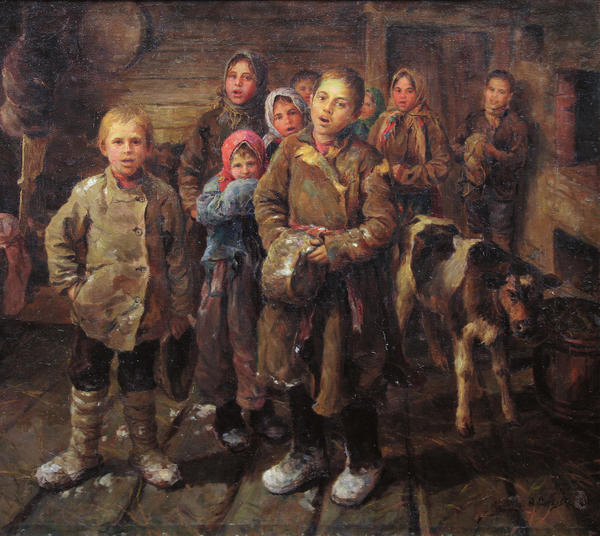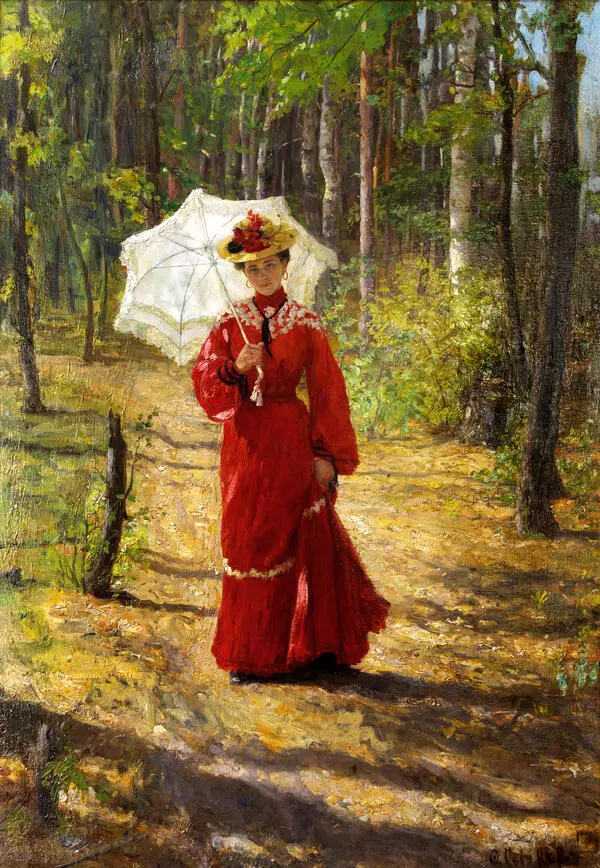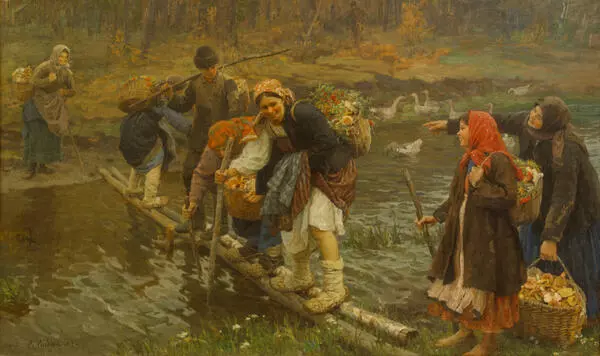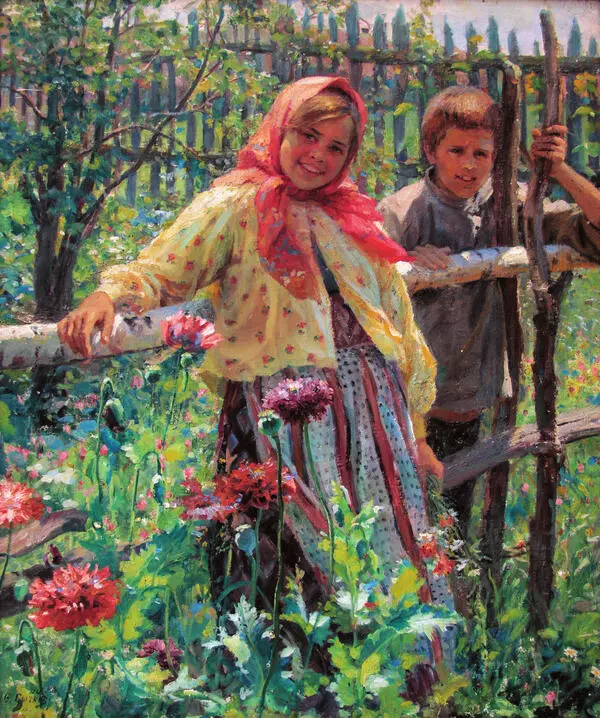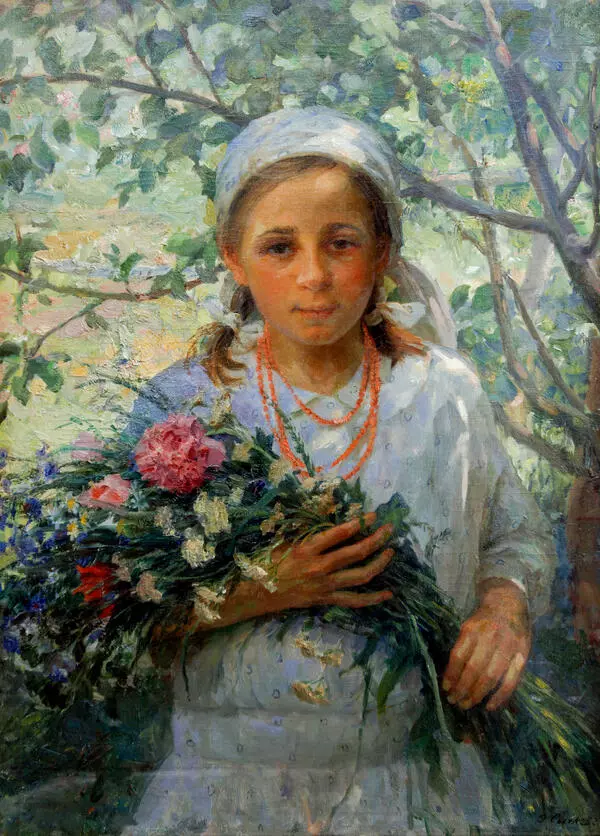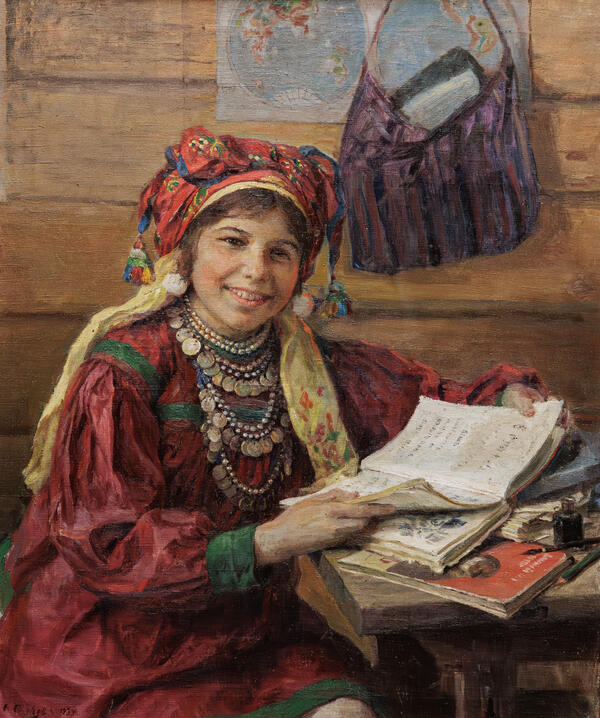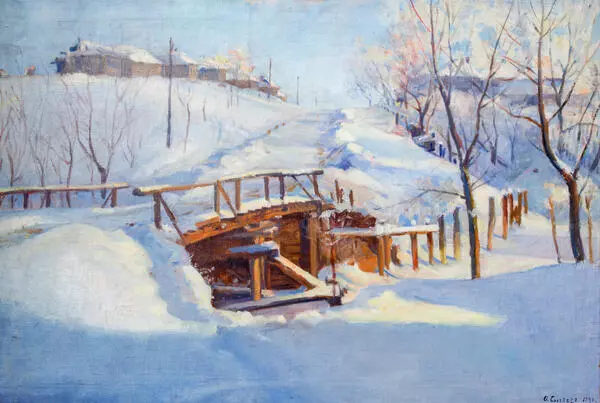Since the ancient times, Christian and pagan rituals have been intertwined in the celebration of the Nativity of Christ. In the villages, the custom of koleduvane has been preserved: on the night before Christmas the mummers (people in costumes) went from house to house and sang praises to Christ or carols, and in return received gifts or money. In the painting ‘Christ Singers’ Fedot Sychkov painted the village children during this festive action.
Knowing very well the life and living conditions of the peasants, the artist created a truthful depiction of how the ordinary people lived at the beginning of the 20th century. With its message and realistic portrayal, the painting ‘Children Singing on Christmas’ is similar to the best works of the Peredvizhniki or the Itinerants, the artists who were part of the Society for Traveling Art Exhibitions. They demonstrated a special compassion towards the common people. Ilya Repin, Vasily Perov, Vladimir Makovsky depicted the impoverished lives of ordinary people. In contrast to the artworks of the Itinerants, in ‘Christ Singers’, Fedot Sychkov does not make a critical statement about the existing social system, but rather proclaims his sympathy for the people.
The artist painted with a genuine sense of participation. Probably, he once was one of these boys: also dressed in shabby clothes he would go to his fellow villagers to praise the birth of Christ in the hope of receiving gifts.
Sychkov’s paintings and watercolors on the theme of Christian holidays were often reproduced in popular Russian magazines at the turn of the 19th and 20th centuries. They were published by ‘The Homeland’, ‘Niva’, ‘Sun of Russia’, ‘Lukomorye’. The ‘Richard’ publishing house printed many of his painting on postcards. They sold many copies. Paintings ‘Return from the Church’, ‘Tobogganing on Maslenitsa’, ‘At the Church. At Easter’, ‘To Dinner’ were displayed at Russian and international exhibitions, collectors and art lovers very willingly bought them.
Unfortunately, the location of many of his artworks remained unknown even to the painter himself. He repeated ‘Children Singing on Christmas’ many times. An earlier version of 1910 is housed in the Vologda Gallery. This canvas is the author’s version of 1935.
Knowing very well the life and living conditions of the peasants, the artist created a truthful depiction of how the ordinary people lived at the beginning of the 20th century. With its message and realistic portrayal, the painting ‘Children Singing on Christmas’ is similar to the best works of the Peredvizhniki or the Itinerants, the artists who were part of the Society for Traveling Art Exhibitions. They demonstrated a special compassion towards the common people. Ilya Repin, Vasily Perov, Vladimir Makovsky depicted the impoverished lives of ordinary people. In contrast to the artworks of the Itinerants, in ‘Christ Singers’, Fedot Sychkov does not make a critical statement about the existing social system, but rather proclaims his sympathy for the people.
The artist painted with a genuine sense of participation. Probably, he once was one of these boys: also dressed in shabby clothes he would go to his fellow villagers to praise the birth of Christ in the hope of receiving gifts.
Sychkov’s paintings and watercolors on the theme of Christian holidays were often reproduced in popular Russian magazines at the turn of the 19th and 20th centuries. They were published by ‘The Homeland’, ‘Niva’, ‘Sun of Russia’, ‘Lukomorye’. The ‘Richard’ publishing house printed many of his painting on postcards. They sold many copies. Paintings ‘Return from the Church’, ‘Tobogganing on Maslenitsa’, ‘At the Church. At Easter’, ‘To Dinner’ were displayed at Russian and international exhibitions, collectors and art lovers very willingly bought them.
Unfortunately, the location of many of his artworks remained unknown even to the painter himself. He repeated ‘Children Singing on Christmas’ many times. An earlier version of 1910 is housed in the Vologda Gallery. This canvas is the author’s version of 1935.

